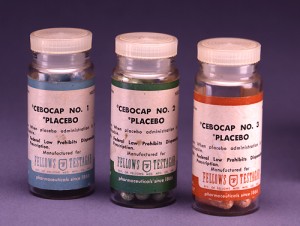Randomized Clinical Trials > Number Needed to Harm
What is Number Needed to Harm?

A different NNH is calculated for each specific adverse event. For example, one IBIS study showed that the breast cancer drug tamoxifen caused a thromboembolic event (a blood clot that blocks a blood vessel) in about 1 in 138 women, giving it an NNH of 138 for thromboembolic events. On the other hand, tamoxifen’s NNH for endometrial cancer and cardiovascular events was small enough to be labeled “not significant.”
NNT and NNH
Number needed to harm is similar to number Number needed to treat (NNT); While NNH is a measure of harm or adverse effects, NNT is a measure of how many patients needed to be treated in order for one to benefit. Together, these statistics help physicians decide on courses of treatment. Lower NNT and higher NNH treatments are preferred over those with higher NNT and lower NNH. However, that doesn’t mean you should always choose a drug based on NNT/NNH statistics alone: the decision to use a specific drug depends on how much of a benefit a patient receives vs. the seriousness of side effects. For example, the withdrawn drug Vioxx had a very good NNT of 2.2, but an NNH for heart attacks of 333.
Calculations
Number need to harm is calculated in the same way as number needed to treat: divide 1 by the absolute risk increase.
References:
IBIS investigators. First results from the International Breast Cancer Intervention Study (IBIS-I): a randomised prevention trial. Lancet 2002;360:817–24.
Rabbie, et. al. “Ibuprofen with or without an antiemetic for acute migraine headaches in adults.” Cochrane Database Syst Rev. 2010; (10): CD008039.
Published online 2010 Oct 6. doi: 10.1002/14651858.CD008039.pub2
Retrieved 3/21/2017 from: https://www.ncbi.nlm.nih.gov/pmc/articles/PMC4161114/